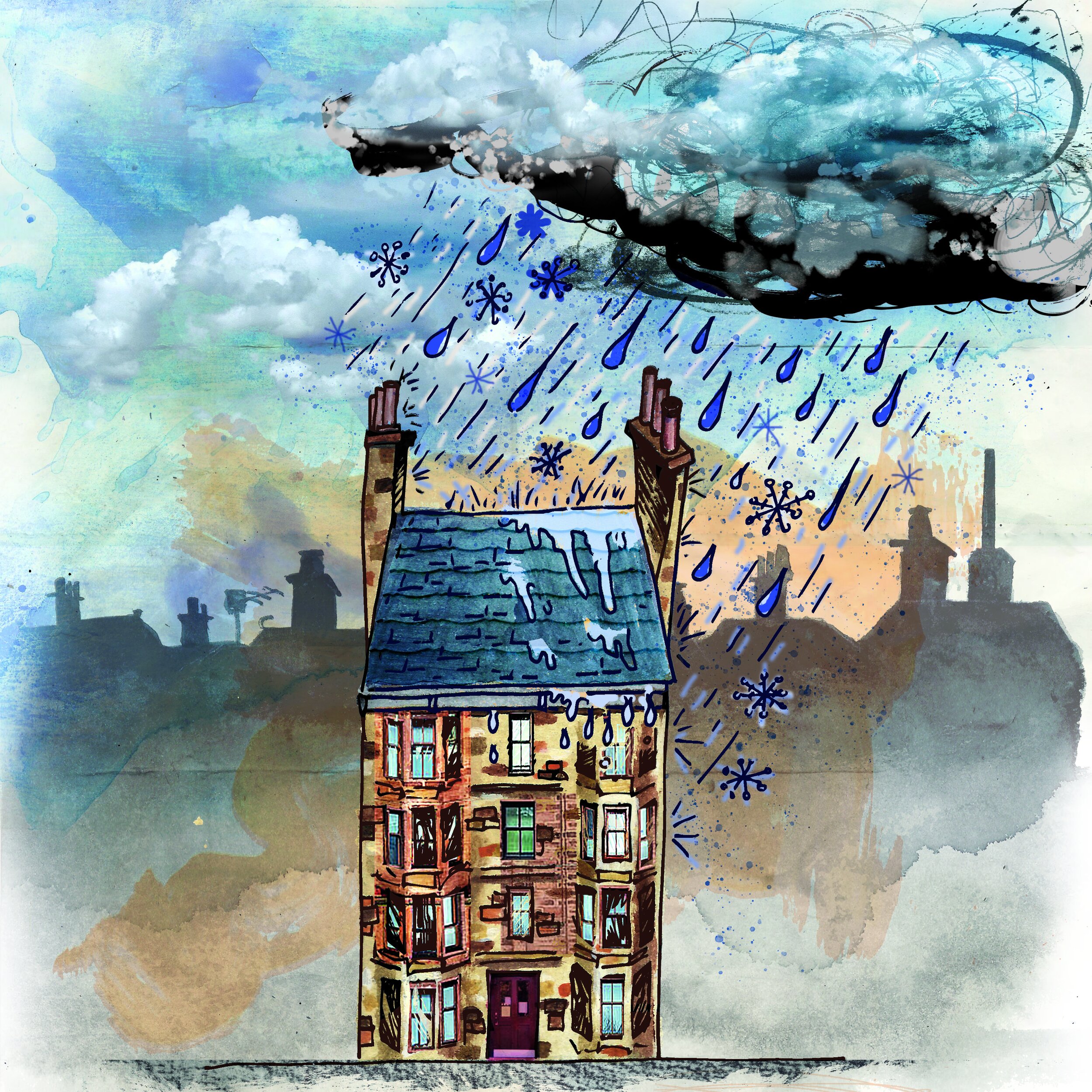The Retrofit Revolution: Making the Most Out of Your Tenement
Tenement living offers some beautiful flats with luxuriously high ceilings in lovely stone buildings. But these homes are not necessarily designed with energy and heat conservation in mind. Retrofitting is a means of making our homes more energy efficient. Taken from Issue 5 of the magazine, Rhiannon Davies spoke to Loco Home Retrofit to find out more.
Words by Rhiannon Davies | Illustration by Alistair Quietsch
When it comes to retrofitting tenements, it seems we’re stuck in a bit of a chicken and egg situation. What comes first? The increased demand for retrofitting in private homes? Or the capacity of suppliers to be able to carry out the works?
But first, let’s get back to basics; what does retrofitting actually mean? To retrofit a home means to retrospectively modify or improve an existing building. In the context of the climate crisis, this means getting homes off fossil fuels and onto low carbon heat sources. These sources, such as heat pumps, use electricity, which is currently more expensive than gas. And so, in order to make the transition affordable, it also requires energy efficiency. As Chris Carus, co-founder of Loco Home Retrofit co-operative succinctly puts it: “Insulation is cheaper than a wind turbine.”
Based here in the Southside, Local Home Retrofit was launched in December, following a model established by the Carbon Co-op in Manchester. They’re seeking to act as a community intermediary as Chris explains:
“We are offering paid advice and we will provide project management services, but we want to build a community of people who want to take action and learn from each other. We also want to improve and influence the dynamic between home-owners and the supply chain. We want to support local small enterprises to take advantage of the decarbonisation transition.”
“The big problem with retrofit, besides the financial and organisational issues, is that there’s a huge shortage of skills and capacity. We strongly believe that the existing local tradespeople who have all the right skills already, are going to be instrumental. We need to help to de-risk it.”
Read More: My Retrofit Journey
For many self-employed tradespeople, their work is in high demand. Taking the time to learn new skills means lost earnings. And there is not currently enough demand to guarantee immediate returns. Chris and co-founder Tom Nockolds are hoping that the social enterprise they have set up will make it easier for tradespeople to take that leap.
Top Tips from Chris Carus
If you have a condensing combi boiler, see how low you can turn down the heating dial on the boiler itself, while still maintaining the room temperature using the thermostat. This will mean less heat is lost through the pipe that runs from the boiler.
For an easy measure, get draught proofing. If you find a gap, fill it somehow, whether with a brush under a door or even a bit of tape on a gap in the floor. Take care to make sure that your home still has enough ventilation. For support on this, check out the resources offered by www.southseeds.org
Don’t just think about single measures. Think about your whole home. This is where getting an expert in can really help.
If you live in a tenement and don’t have an owners association, start talking to you neighbours about maintaining the building and your close and what it means to get off fossil fuels.
As Tom points out: “Tenement flats should be seen as luxury buildings, built with beautiful stone and high ceilings. But in terms of thermal comfort, they’re not that great. I have to run heaters a lot just to keep warm during the day. If we can get this right, we can make them live up to the promise of the luxury buildings they are. We know future heating sources will be less hot than current gas boilers. So there’s things we can do now that will get us ready for that time.”
For Chris, retrofitting goes beyond reducing our carbon footprint: “It can eliminate fuel poverty, while immunising future occupants against it too. It can also eliminate health problems, which is good for the NHS as well as the occupants. People don’t realise how much more comfortable their properties can be. Having a home that is warm everywhere improves your quality of life, and can make people working from home more productive too.”
In Strathbungo, a tenement building owned by the Southside Housing Association on Niddrie Road is being retrofitted to the highest standards. A raft of measures are being installed including insulation in the walls, loft and ground floor, and heat pumps in four of the eight flats. It is being seen as a research project and template for the 73,000 pre-1919 sandstone tenements in Glasgow. The findings will be vital for meeting net-zero targets, as a typical tenement emits 5.6 tonnes of carbon a year, compared with 3.6 tonnes for those built after 1982. This may be the extreme end of the scale, but there are smaller steps that can be taken too.
Aside from the building structures themselves, one of the biggest challenges for tenements is the organisational elements. Multiple home owners need to work together. And there can be more pressing maintenance issues which may take priority. Retrofitting is already underway in social housing. So there are suppliers out there, just not enough yet for the decarbonisation transition.

